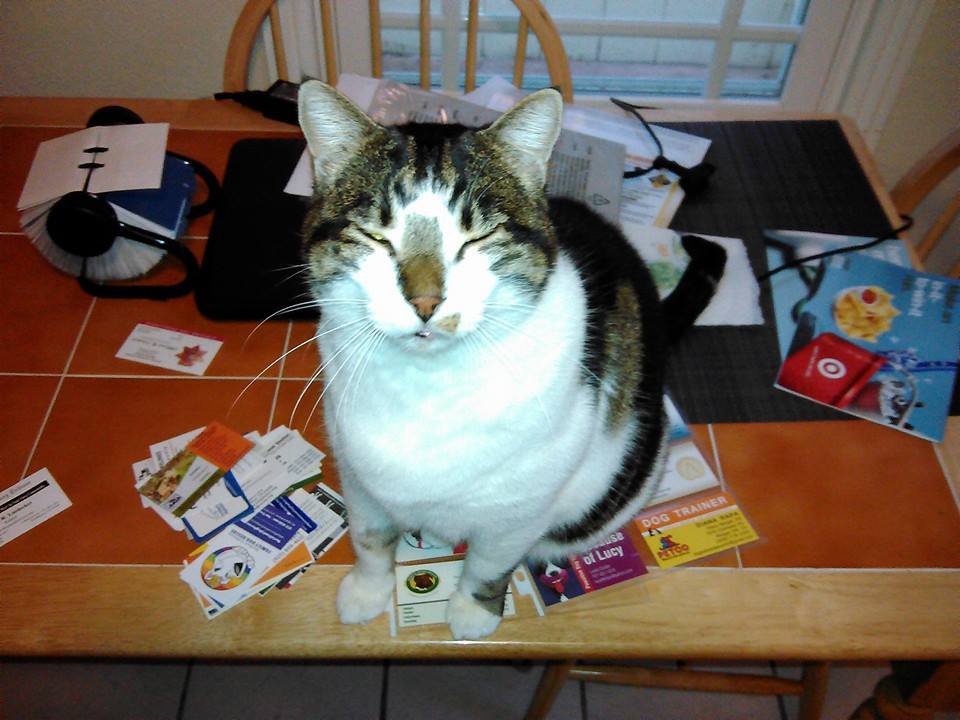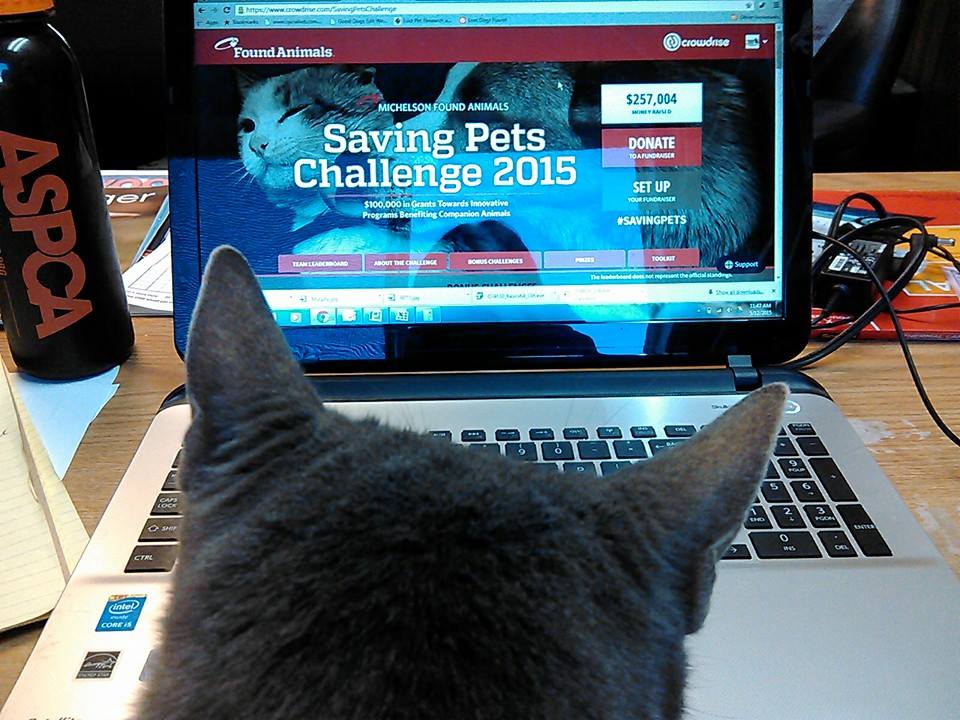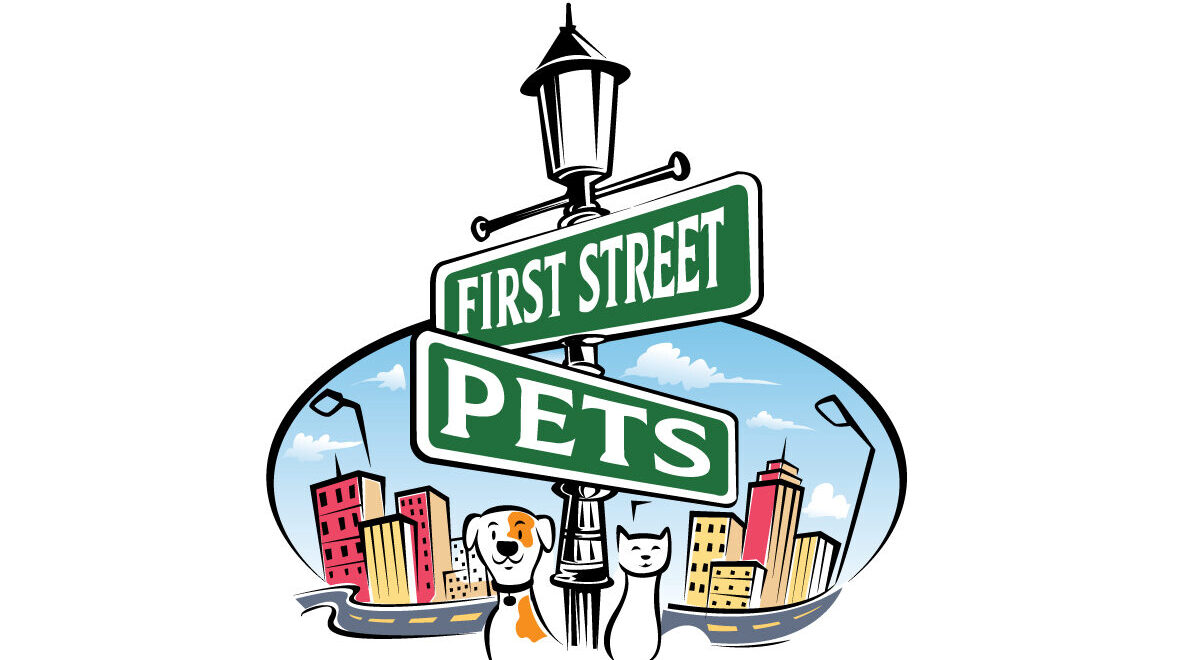
You’re thinking that pet sitting is for you and you want to know how to get started. Here are some tips on start-up essentials so you can create the business of your dreams.
In part one we talked about determining your financial needs. With that in mind, what size of a business do you want to ultimately have? Do you want to be a solo sitter, a partnership, or a company with a team of employees? Whichever you choose, know that it will take some time to build.
In 1995 I started my business in the summer and was fully booked by Christmas. Those days are over. Today’s sitter faces heavy competition primarily from the app-based sitters and secondarily from other professionals. The reason I rank them that way is that the majority of the app-based sitters are doing this as a hobby, charging bargain basement prices, and offering services that aren’t legal like in-home dog boarding. Professionals will be charging market rates to cover the costs of doing business as well as make a profit, and they will be bound by the laws in your area. You will quickly and unfortunately discover that your average pet owner seeking services has come to view the app-based offerings (and prices) to be the norm.
Whatever your ultimate dream business, you will be starting small, but setting up a structure that is sustainable as you grow. Here are some essentials to pull together even before you walk a dog or pet a cat.

1) Business name and brand identity.
What would you like to be known for? Do you have a specialty like large animals or medical care? Will you care for all pets, just cats and dogs, or just cats? All of these factors will go into choosing a name. You can always use your name, like “Mary’s Pet Sitting,” or “Mary’s Loving Pet Care.” Some sitters like generic names that are easy to remember like “Pet Nanny,” while others go for something more original. Keep it simple, not too long, and easy to understand and remember. I was recently on a call with a web designer who recommended an SEO-related company to me. The name was short but an odd word, easily misheard, that he had to spell out. He even remarked that it was a poor choice of name for that reason!
Once you decide on your preferred name, you will need to do a search to make sure no one else in your state is using it. You can usually run this search through your local County Clerk-Recorder’s Office. Once you’ve determined that the name is available, you’ll need to file a Fictitious Business Name statement. This gives you the legal right to conduct business under that name. Once you receive approval of your Fictitious Business name or DBA (Doing Business As) you will need to publish it in a local newspaper. Just call your local newspaper office and they will walk you through it.
2) Services and prices.
What services will you offer, and what will you charge? Dog walks, drop ins, overnights? Transport, grooming, training? Think about what you are able and willing to do before committing to it. Do you want to board dogs in your home? Read this article first. According to Thumbtack, the average price for a drop in visit is $25 and for an overnight, $75. Prices will vary across the country, and will be higher than average in more metro areas. You will never be able to compete with the hobby sitters, so don’t try. My philosophy has always been to charge on the high end of average and offer great service. You do not want to fill up your schedule with clients looking for the cheapest price. It takes just as much time and energy to do a 30-minute visit for $10 as it does for $30.
3) Bank account. The next thing you’ll do with your filed DBA is go to the bank. You’ll want to keep your business and personal accounts separate from the start. This makes accounting and filing taxes much easier, and will prepare you for payroll in future should you hire staff. With your DBA, ID, and minimum deposit, you should be able to open your new account in half an hour or less. I bank with a credit union because they have many benefits for members and good rates. In future you may want a business credit card for larger purchases, and an APR of <10% is a lot better than 25% from your average credit card! The bank teller can advise you of your options for debit cards, deposits, checks, and other account options. I have checks but I rarely use them, as so many transactions in today’s world are electronic.
4) Business license. While there is no license or accreditation required to become a pet sitter, you will need to pay for a business license in the cities where you provide service. This is a tax based on earnings, so when you’re brand new you just select the lowest amount. Call your local city hall or check their web site for this information.
5) Scheduler. Back in the day I used an actual paper day planner. When computers became more popular, I switched to a day planner program that looked just like the paper version but it was on the screen. Each day I printed the day’s schedule and took it with me on my visits. Today there are a number of apps that do a great job of not just scheduling but billing, client info, staff info, and more. I use Time to Pet, but there are a number of others all getting good reviews from their users. I love the convenience and the security of having all my info in an app. I never liked carrying client service agreements around with me in the old days. If anyone broke into my car and took my binder, they would have found client’s names, addresses, alarm codes, and other compromising information free for the taking.

When you’re starting out, you may not want to spend money on an app that you will only minimally use until your business is built up. When you have only a handful of clients and you’re a solo sitter, the calendar and address apps that come with your phone or tablet will work just fine. You will know when the system starts becoming overloaded and it’s time for an upgrade.
6) Paperwork. As I mentioned earlier, I run my business paperless, so I have to chuckle when I tell clients I’ll “pencil them in” even though I do everything electronically. In the beginning, you may indeed use paper forms for your clients to fill out and sign. I recommend starting with a template like those offered through Pet Sitters International. You must be a member to purchase the forms, but there are many benefits to membership so it’s worth the cost.
Your arsenal of forms should include a basic service agreement and species-specific pet care info sheets. You may have additional forms for special care such as plants or home care as well as a daily visit checklist, report card, and client invoice. The forms you use on a regular basis will evolve as you develop your business and understand what you need.
Laws vary from state to state, so it’s a good idea to take your draft service forms to your local legal counsel for review. No form will protect you 100% from any liability, but they can save you a lot of headaches in many cases.
If you are using good old paper, I do not recommend that you do what I did in the 90’s and carry it all with you. Instead, scan the documents and store them on a cloud service like DropBox so you can access them from your phone or tablet without compromising client security. When you start using one of the pet sitting specific apps, you can customize the internal documents to match what you used to record on paper.
7) Business cards. I’ll go more into detail about this in part three, Marketing, but it’s worth a mention here. In today’s world, we almost don’t need business cards. Almost. I still hand a couple to every new client so they can keep one and give another to a friend, and they are good tools to display in places where you may get referrals like the veterinarian’s office.

You can get these from a local print shop or order inexpensively through an online service like Vistaprint. Don’t have a logo? If you have an idea of what you want and can afford graphic design, go for it. If not, you can use an online service like Fiverr which is very inexpensive and fast. Now, these logos are primarily composed of clip art – you won’t get hand-drawn designs in 48 hours for $25 – but they do the trick and look good for the new business owner. You can always upgrade later when your business is successful and you have a bigger budget.
8) Website. I am amazed at how many people in today’s world think they don’t need a website. When the internet was new, several people suggested I get an email for my business. I blew them off, saying, “What do I need that for? If someone wants to get a hold of me they can call.” HAHA. This isn’t 1995 (when I made that comment), and every business owner needs at least a basic website. A large percentage of potential clients are searching for services online, and if you’re not there, you’ll miss out.

I’m a DIYer and have always done my own web design, which is good because professional services can be very costly. There are many companies out there offering WYSIWYG (what you see is what you get) website builders that are fairly easy to use like GoDaddy, Weebly, and Wix. These are good options if you’re not tech savvy and don’t have a big budget. When you’re ready, you can upgrade to a paid site with your own domain name and more features on the same platform or a different one if you wish. I’ll go into more detail on this subject in a future article about the use of technology to run a pet sitting business.
Check out the next article in this series, Marketing for pet sitters.

